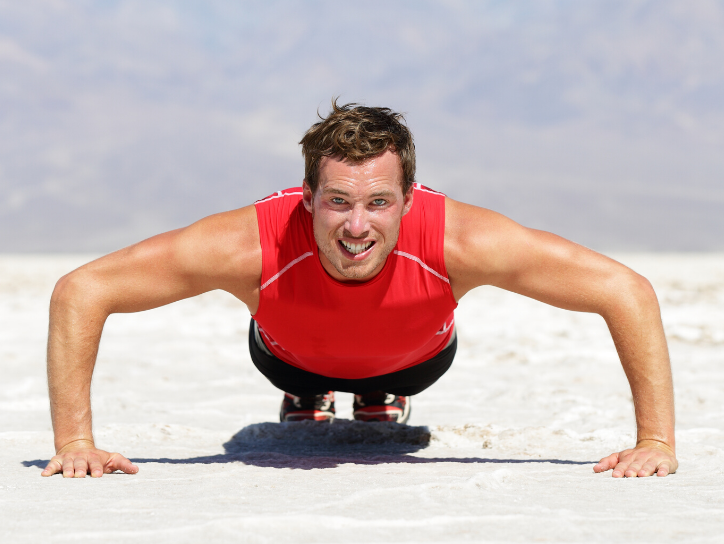Did you ever hear the word tight hips? No, it is a moment of realization because we are in the same boat.
Tight hip flexors is the term used in gyms or for players. Athletes complain about their injuries, but the people in the gym are worried about their tight hips.
If you acquire a gym, then you need to understand different terms of flexors in the body. Suppose you are unaware, then how could you help your clients. It is not all about how to stretch hips, but the reason for stretching is essential to recognize.
Information To Know About Tight Hip Flexors
It is an essential part of any of the pain first to know what it is about? The hip flexors are the muscles that stimulate the movement of the legs and back together; for example, moving your leg to the right, lifting and bending, all depends on it.
The muscles consist of hip flexors:
-
-
- The iliopsoas,
- Fasciae late,
- Rectus femoris,
- The Sartorius.
-
All the above muscles help in the movement altogether. It also helps to balance your spinal cord.
Tight Hip Flexors Symptoms
It is an apparent clue; you feel tightness around the hips. You try to move them but feel a strain in your back as well. If one muscle is irritated, it affects the others too.
-
-
- Feel pressure alongside your back while standing.
- It makes it challenging in your postures.
- Strain in your glutes and hamstring.
-
Hip Flexor Strain Test
You can do a home test to judge whether you are having right hip flexors or not? The test makes it clear that you have a minor issue or a major.
How to Do a Test?
-
-
- Lay down straight on a yoga mat.
- Pull your knees towards your chest.
- Hold it there for a minute.
- Stretch out your other leg as much as possible.
- If it’s tough to pull your leg, it is clear to have hip tightness.
-
What Causes Tightness In The Hip Flexors?
There must be different reasons for tight hip flexors.
-
-
- Sitting all day long can make your muscles short.
- Your sitting posture.
- Laying on a single side the entire night.
- Unhealthy lifestyle.
- While pregnant.
- The athletes or runners have this problem usually.
- After a workout session.
-
How To Stretch Your Hip Flexors
It is very challenging to roam around freely with the strain on your hips. You can not shake your booty at a dance party. It’s better to give yourself some time by stretching your body as stretching helps your body muscles in flexibility and stimulating blood flow. Some of the hips stretches are explained below.

Read Also: Choose The Best 30 Day Exercise Challenge With No Equipment
How You Can Stretch By Using Foam Roller
You can stretch up your hip muscles:
-
-
- Place a yoga mat of your favorite color.
- Put the roller foam beneath.
- Lay on the foam, facing your head downwards.
- Stretch out your legs by exerting pressure on the feet.
- Now move back and forth on the foam roller.
- Continue the stretching according to your ease.
- Repeat it twice for some relief from pain.
-
Pigeon Stretch
It stimulates in stretching your hip flexors.
-
-
- Place yourself in a tabletop position.
- Move your right knee towards the right wrist.
- You are placing your ankle in front of the opposite side of your hips.
- Straighten up your left leg with the pointed foot.
- Gradually push yourself downwards.
- Hold the position for up to ten seconds.
- You should slowly come back to the starting state.
- Repeat it until the desired results
-
Spiderman Stretch
The spiderman stretches to lose your lower body fat as well.
-
-
- Place yourself in the posture of push-ups.
- Step your left foot towards the outside of the left hand.
- Lean your hips forward.
- Stay in the position for ten to fifteen seconds.
- Come back to the original posture.
- Repeat it ten times with both legs.
-
Butterfly Stretch
It is the best stretch performed after the HIIT session. It will stretch not only your hip flexors but also your glutes and hamstring.
-
-
- Sit up on the floor with the leg folding position.
- Now bring both foot soles together.
- You are placing your heels as close as your body.
- Move forward a bit.
- Exert some pressure on your elbows.
- Stay in the position for 30 seconds with a straight back.
-
Horizontal Squat Stretch
It also stimulates the muscles of your back.
-
-
- Start in the position of kneeling at ninety degrees.
- You are placing your body on elbows and knees.
- Move your body downwards as much as you can to feel the pressure in your spine.
- Push your hips back and forth.
- Stay in the posture for a minute for the best results.
-
Stretch While Sitting
You can perform this stretch sitting anywhere while at work or home.
-
-
- Place a chair and sit on it.
- Move your right ankle on the left knee.
- Lean yourself forward until you feel the stretch.
- Repeat it on another side as well.
- Hold the position for a minute maximum.
-
Exercises For Tight Hip Flexors
The exercises you can do with pulled hip flexors are many, but you have to do according to the ease.
-
-
- Make a bridge: laying on your back and moving your hips as high as you can. It will help you stretch your hips, core, and glutes.
- Mountain climber: Place yourself in a plank position. Move your knees towards your chest simultaneously.
-
How To Prevent Tight Hips
You can prevent yourself from a hip flexor strain by:
-
-
- A healthy and active lifestyle.
- A good warmup before exercise.
- Always do a cool-down stretch after a workout.
- Do an excellent stretching session once a day.
- A good massage from an expert can relieve your tight hips, muscle relaxation, and blood flow.
-
Tight hips may limit your daily activities of life. Therefore it’s better to recognize it as soon as possible. Start several stretching positions at home. If you feel relief from tightening, then it’s good to continue stretches. But if you are unable to move after a stretch, it’s better to consult a doctor.
















